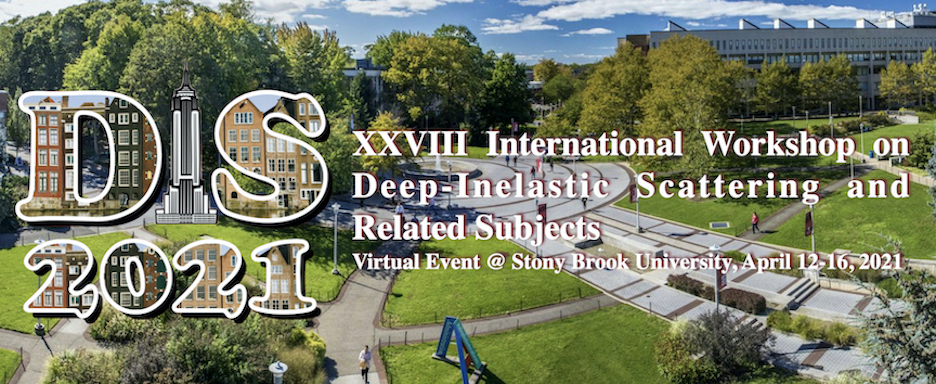Speaker
Description
Rare two-body decays of the top quark into a neutral bottom-quark meson plus an up- or charm-quark: $t\to {\overline B}^0+ u, c$; $t\to {\overline B}^0_{s}+ c,u$; and $t \to \Upsilon(nS)+ c,u$, are studied for the first time. The corresponding partials widths are computed at leading order in the non-relativistic QCD framework. The sums of all two-body branching ratios amount to $\mathcal{B}(t \to {\overline B}^0+ {\rm jet}) \approx \mathcal{B}(t \to {\overline B}^0_{s}+ {\rm jet}) \approx 4.2\cdot 10^{-5}$ and $\mathcal{B}(t \to \Upsilon(nS)+ {\rm jet}) \approx 2\cdot 10^{-9}$, respectively. The feasibility to observe the $t\to {\overline B}^0_{(s)}+{\rm jet}$ decay is estimated in top-pair events produced in proton-proton collisions at $\sqrt{s} = 14, 100$ TeV at the LHC and FCC, respectively. Combining many exclusive hadronic ${\overline B}^0_{(s)}$ decays, with $J/\psi$ or $D^{0,\pm}$ final states, about 50 (16\,000) events are expected in 3 (20) ab$^{-1}$ of integrated luminosity at the LHC (FCC), after ty
pical selection criteria, acceptance, and efficiency losses. An observation of the two-body top-quark decay can also be achieved in the interesting $t\to b(\rm{jet})+c(\rm{jet})$ dijet final state, where t
he ${\overline B}^0_{(s)}$ decay products are reconstructed as a jet, with 5\,300 and 1.4 million signal events above backgrounds expected after selection criteria at the LHC and FCC, respectively. Such unique final states provide a new direct method to precisely measure the top-quark mass via simple 2-body invariant mass analyses.

